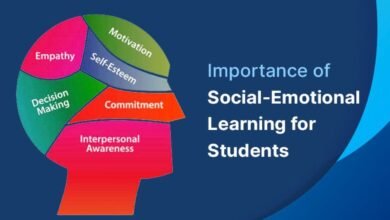How to Use Data to Improve Student Outcomes

In the ever-evolving landscape of education, leveraging data has become increasingly pivotal in enhancing student outcomes. Educators, administrators, and policymakers are now more than ever relying on comprehensive data analysis to drive decisions that impact student achievement. This article explores the various ways data can be utilized effectively to improve student outcomes, highlighting strategies, tools, and practical steps that can be implemented in educational settings.
Understanding the Role of Data in Education
Data in education encompasses a wide range of information, from student performance metrics to behavioral observations and attendance records. The fundamental goal of using data is to gain insights into student learning processes and outcomes, enabling educators to tailor their approaches to meet the unique needs of each student. The shift from traditional teaching methods to data-driven strategies represents a significant advancement in educational practices, emphasizing the importance of evidence-based decision-making.
Types of Educational Data:
- Academic Performance Data: This includes test scores, grades, and assessments that provide insight into a student’s academic strengths and areas needing improvement.
- Behavioral Data: Observations related to student behavior, engagement, and participation in class activities.
- Attendance Data: Tracking student attendance and punctuality, which can impact overall academic performance.
- Demographic Data: Information about students’ backgrounds, including socioeconomic status, ethnicity, and family structure, which can influence learning experiences and outcomes.
By analyzing these data types, educators can identify patterns, address gaps, and implement targeted interventions to foster an environment conducive to academic success.
Analyzing Data to Identify Trends and Issues
One of the primary uses of educational data is to identify trends and issues that may not be immediately apparent through observation alone. For instance, a school might use data analytics to uncover trends in student performance across different subjects or grade levels. Such analysis can reveal:
- Curriculum Effectiveness: How well the curriculum is meeting the needs of students and whether certain areas require revision.
- Student Progress: Tracking individual student progress over time to determine if they are on track to meet academic goals.
- Resource Allocation: Assessing the effectiveness of resource allocation, including the deployment of teachers, technology, and support services.
Practical Steps for Data Analysis:
- Data Collection: Collect data systematically from various sources to ensure accuracy and comprehensiveness.
- Data Cleaning: Ensure the data is free from errors and inconsistencies before analysis.
- Data Visualization: Use graphs, charts, and dashboards to visualize data trends and make insights more accessible.
- Data Interpretation: Analyze the visualized data to draw meaningful conclusions and make informed decisions.
Effective data analysis enables educators to pinpoint specific areas of concern and to develop targeted strategies for improvement.
Implementing Data-Driven Strategies
Once data has been analyzed, the next step is to implement strategies based on the findings. Data-driven strategies can vary widely depending on the issues identified and the context of the educational setting. Here are several approaches to consider:
1. Personalized Learning:
Data can help tailor educational experiences to individual student needs. By analyzing performance data, educators can develop personalized learning plans that address specific strengths and weaknesses. For example, if data shows that a student struggles with reading comprehension, targeted interventions such as additional reading support or specialized instructional materials can be implemented.
2. Targeted Interventions:
Data can identify students who may need additional support, such as those who are falling behind in certain subjects. Implementing targeted interventions, such as tutoring programs or after-school help, can address these needs and improve overall student performance. Schools can use data to determine which interventions are most effective and adjust their strategies accordingly.
3. Professional Development:
Data can also inform professional development for teachers. By analyzing data on student outcomes, educators can identify areas where additional training or support is needed. For instance, if data shows that students in a particular grade level are struggling with math, professional development programs can be designed to help teachers implement effective math instruction techniques.
4. Resource Allocation:
Effective use of data helps schools allocate resources more efficiently. For instance, if data indicates that certain classes have a higher number of students needing additional support, schools can allocate more resources, such as additional teaching assistants or specialized materials, to those areas.
Overcoming Challenges in Data Utilization
While the benefits of using data to improve student outcomes are significant, there are several challenges that educators and institutions may face:
1. Data Privacy and Security:
Ensuring the privacy and security of student data is paramount. Educational institutions must adhere to legal and ethical standards for data protection, ensuring that sensitive information is safeguarded against unauthorized access and misuse.
2. Data Overload:
With the vast amounts of data available, it can be overwhelming to process and analyze it effectively. Educators need to focus on the most relevant data points that directly impact student outcomes and avoid becoming bogged down by irrelevant information.
3. Training and Expertise:
Effective data analysis requires a certain level of expertise and training. Schools must invest in professional development for educators to ensure they have the skills needed to interpret and use data effectively.
4. Resistance to Change:
Some educators may be resistant to adopting data-driven approaches due to a preference for traditional methods or skepticism about the value of data. Overcoming this resistance involves demonstrating the benefits of data-driven strategies through evidence and success stories.
The Future of Data in Education
As technology continues to advance, the role of data in education is likely to expand further. Emerging technologies such as artificial intelligence and machine learning have the potential to revolutionize how data is used in schools, providing even more precise and actionable insights into student learning and outcomes.
Future Trends to Watch:
- Predictive Analytics: Using data to predict future student performance and intervene early to address potential issues.
- Adaptive Learning Technologies: Implementing technologies that adapt to individual student needs in real-time based on data analysis.
- Real-Time Data Monitoring: Utilizing real-time data monitoring tools to track student progress and engagement continuously.
In conclusion, data is a powerful tool that, when used effectively, can significantly enhance student outcomes. By understanding the role of data, analyzing trends, implementing data-driven strategies, and addressing challenges, educational institutions can create a more informed and responsive learning environment. The future of education lies in harnessing the full potential of data to support student achievement and foster academic success.
Using data effectively can transform educational practices and significantly impact student success. By embracing a data-driven approach, educators can better meet the needs of their students and drive improvements across the educational landscape.



